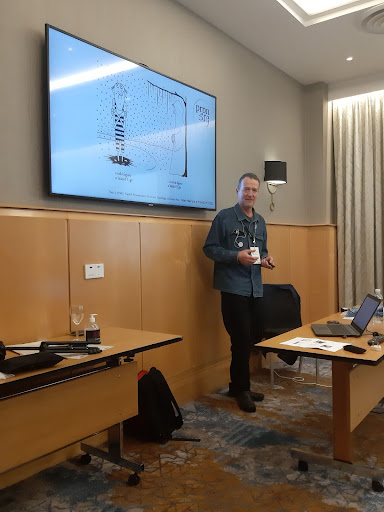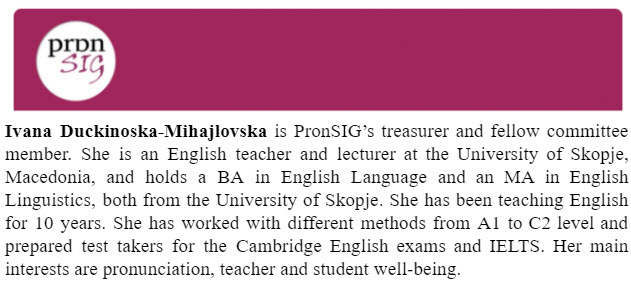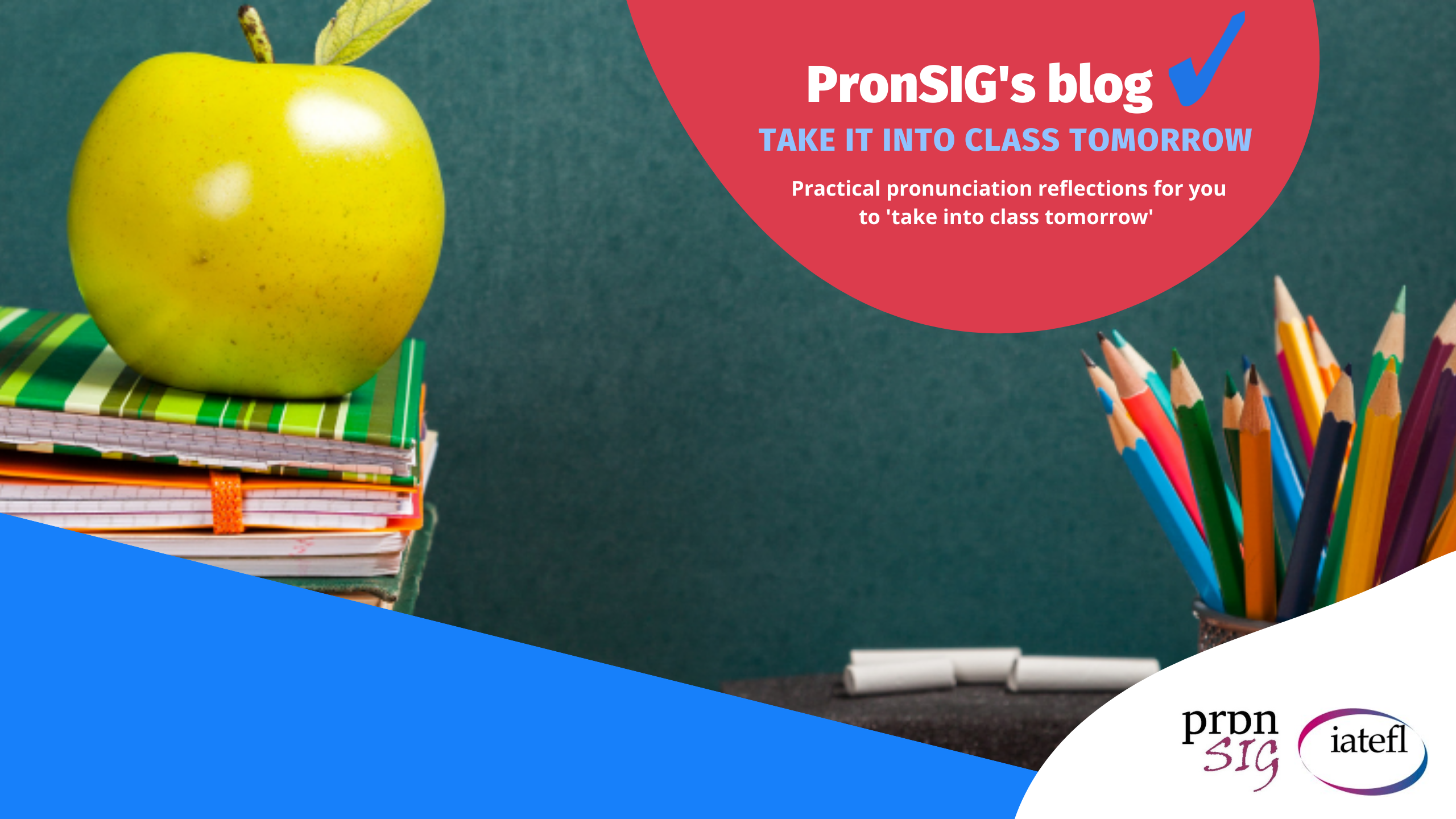by Ivana Duckinoska-Mihajlovska
PronSIG’s Pre-Conference Event (16 May), Pronunciation and the four skills, offered us a myriad of ideas and tips on how to integrate pronunciation into our lessons. At the beginning of the month, we focused on Reading and Listening. Click here to check this post. Now, it’s time to turn to Speaking and Writing.
- Pronunciation and Speaking

Even though pronunciation and speaking always seem to go hand in hand, Mark Hancock, ELT professional and another well-known PronsSIG’s collaborator, explained why we usually find it difficult to integrate pronunciation teaching in a speaking activity. It seems that these two are two different realms, always going in the opposite direction. By this he means that there is danger of an activity either having more focus on pronunciation or more focus on speaking, i.e., the more focused on pronunciation an exercise is, the less realistic it gets in terms of its speaking purpose. The same is true the other way round. The solution to this, though, can be adopting one of two approaches.
The first is to add more pronunciation focus to a speaking task, where learners are prepared for the pronunciation feature in the before-speaking phase so that while speaking, they can monitor their performance by using checklists. Finally, they should reflect on how they used that pronunciation feature. For instance, a teacher takes a speaking activity where they want to revise question forms and statements, but at the same time intonation. Thus, instead of students simply completing the activity to reach a certain conversation outcome, the questions and statements can be used to revise intonation. Questions such as: Did you use a high-fall for the question?; Does the filler need a fall-rise? and many more can encourage learners to think about their intonation.
The other approach is to take a standard pronunciation activity and make it more communicative by adding context. For example, rather than just practising minimal pairs as in ship vs. sheep, live vs. leave, we can make an activity more meaningful by adding questions so that it looks more of a dialogue as in the examples below:
a. What is the plural of a. ship, b. sheep ?
b. What is the past tense of a. live, b. leave?
In this way, students become more aware of how their pronunciation makes a difference to meaning.
If you want to find out more similar ideas, check Hancock’s text about it at http://pronpack.com/surrealism-in-pronunciation/
- Pronunciation and Writing

Adam Scott, one of PronSIG’s coordinators and an ELT specialist, talked about the seemingly wide difference between written and spoken text, which usually leaves learners demotivated and unable to find the link between writing and pronunciation. However, he provided practical solutions and approaches for bridging this gap.
A good starting point for teachers is to avoid presenting all spelling patterns for a phoneme since this can be overwhelming for learners. So, instead of introducing all sound-spelling correspondences for /or/, such as al, augh, our, aw, ough, ore, or, and ar, teachers should focus only on one common pattern, for instance, ough spelling as in bought and fought. Then, learners should be encouraged to follow these steps:
- Sound the word /b-ough-t/ → spell it → draw it (make a picture of it to memorise it, e.g., a shopping basket for bought) → read it (teachers previously provide a text with many examples of this spelling for students to read) → find it (learners look for sound-spelling correspondences in the text) → list it (learners make their own list of words with the particular spelling) → write it (learners create their own story with words from the list) → apply it (learners try to find other examples of the particular sound-spelling correspondence).
Such lists of words can be extremely useful for learners as they can turn to them as a reference point for common sound-spelling correspondences.
With this, we wrap up the practical tips from the PCE day with the hope you will find them practical and applicable in your classroom.
Please check our previous blog posts for more ideas on integrating pronunciation in your classroom. Don’t forget to follow PronSIG on social media and leave your comments below.


